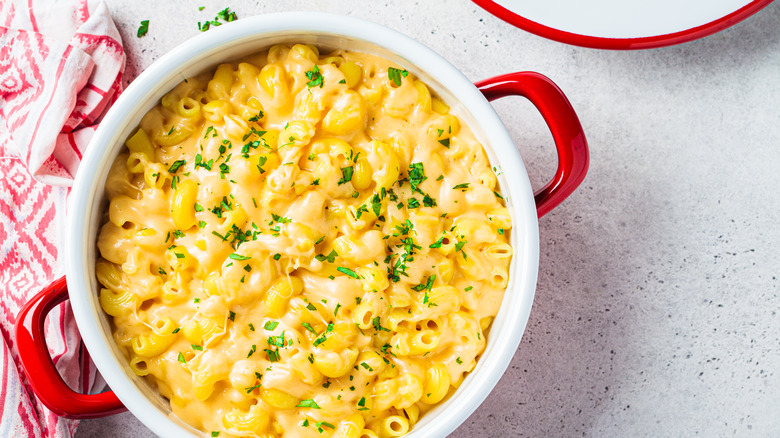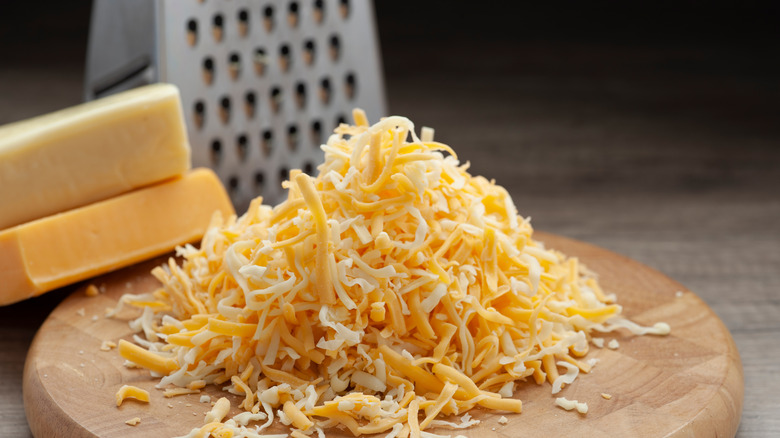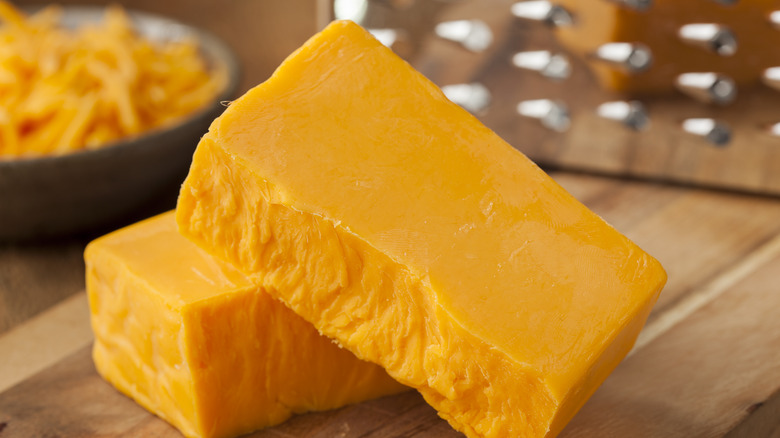What To Consider For The Perfect Mac And Cheese Blend
For many people, mac and cheese is foundational fare. No matter the age of the diners, it's a centerpiece of holiday spreads, a star side dish at barbecues, and a delightfully simple midweek meal. But even though the concept is quite basic, the kind of cheese you choose can take the dish from "everyone is going back for third helpings" to "you're sticking an untouched plate in the fridge for unappealing leftovers." Such a crucial decision requires expert advice (especially since there are an estimated 2,000 types of cheese across the globe). Luckily, Fabrizio Villalpando, home cook and owner of blog Thee Moody Foody, has a lot of mac and cheese opinions.
Some of the ingredient choice will come down to individual tastes, but Villalpando explains to Daily Meal that there are three essential factors to consider when selecting cheese for the purpose: meltability, flavor, and shred. There are some cheeses that just don't melt well because of their lower moisture content, like Parmesan, and will just end up clumping. Villalpando also emphasizes that pre-shredded cheese is a fatal mac and cheese mistake. The preservatives keep it from sticking together in the bag, but also make it difficult for it to melt smoothly. The right cheeses, though, will deliver on all three factors.
A blend adds nuance but cheddar stands out
Villalpando prefers a combination of cheeses for the dish. "I personally love a sharp cheddar, smoked gouda, and American cheese blend," he said. "The sharp cheddar for that classic mac and cheese flavor, smoked gouda for a smoky depth of flavor, and American for an added creamy richness." Plus, all three melt really well.
If those flavors don't seem appealing or you're just looking to experiment with different cheese mixtures, the expert-endorsed cheddar, gouda, and American aren't your only choices. Gruyère, fontina, and Monterey Jack all melt nicely too — just make sure you're grating them yourself.
Choosing just one cheese for a gooey, creamy mac and cheese is a nightmare for Villalpando, but if the simplicity of a single cheese suits you, he suggests sticking to a sharp cheddar. "I've straight up bitten into blocks of sharp cheddar before — that's how much I love the stuff," he said. "It melts well and is full of flavor. It's simply a damn good and versatile cheese."
When it comes to mac and cheese, age is just a number
When it comes to people, age is often associated with experience and wisdom; for cheeses, the corresponding age-related qualities are a fuller flavor and a harder texture. And while that means aged cheese is a delicious topping for salads and pastas and a perfect accompaniment for charcuterie boards, it also means that cheeses like Romano and Emmentaler might be a mistake to use for homemade mac and cheese. Aged cheeses have less moisture (thus, the harder texture) and won't melt well — plus, their bold, funky flavors can overpower the other cheeses.
Of course, they have their place at the table, but Villalpando notes it might not be in your pot of mac and cheese. "Maybe toss in one aged or more complex cheese into the blend if you really want to get funky with it," he said, "but I don't think it's necessary in order to make a good mac. Save the funky stuff for the charcuterie board!" And save the melty, tasty stuff for your mac.


